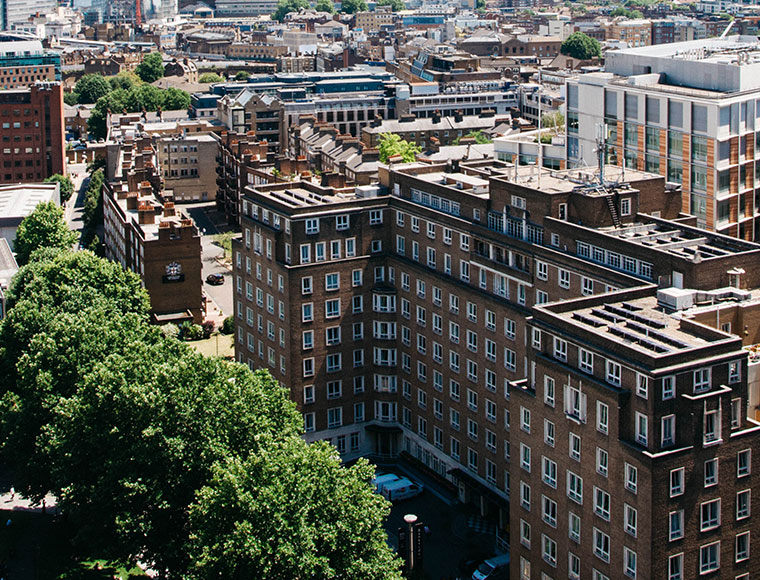So you’re thinking of starting a business. Should you set yourself up as a limited company or a sole trader?
They both have advantages and disadvantages and depends entirely on your individual circumstances. With the introduction of the dividend tax, there was a short period when it was no longer tax efficient to operate a one person business as a limited company. With the cancellation of the reduction of the corporation tax rate to 17% and the impending increase to 25% it is becoming increasingly unattractive to operate as a limited company, especially given the additional accountancy and administration costs involved.
The profit level where it becomes financially advantageous to run a limited company at the current corporation tax rate of 19% is around about £30,000. Any less than this then the financial gain from tax savings is wiped out by the additional costs incurred.
Being a sole trader is the simplest business structure you can set up but it can leave you unprotected in certain legal situations. A limited company requires much more paperwork and compliance (so therefore increased accountancy fees) but can in certain circumstances (but not all) protect you personally.
If you work in the construction industry, the CIS system operates differently depending on whether you are a sole trader or a limited company. If you are considering becoming a limited company and CIS will affect you then please give us a call and we can talk through the different options.
Here are the key differences:
| Sole Trader | Limited Company | |
| Structure | You are the owner of the business, there is no legal separation. | A limited company is its own separate legal entity. It is controlled by shareholders and directors who have obligations towards the company. |
| How do I take income | The profits of the business are your income and you can draw them out. | Income would be taken in a combination of a low salary through a PAYE scheme and then dividends based on the final profits. |
| Paperwork | Have to inform HMRC that you are self employed and register for self assessment.Can produce simple income and expenditure accounts.One self assessment return to be filed by the owner. | Have to incorporate a company with Companies House and register for Corporation Tax.Have to produce financial statements that meet financial reporting standards which are submitted to Companies House.Corporation tax return to be filed.PAYE scheme needs to be run in order to process directors wages.Dividend vouchers need to be produced for dividends taken.Have to register directors / shareholders for self assessment.Self assessment return to be filed by each shareholder/director.Confirmation statement required annually to be sent to Companies House. |
| Privacy | Nobody has to see your finished accounts or personal information. | Registrar (summary) accounts are filed with Companies House and can be viewed by the public.Director’s personal information, such as home address, are also readily available at Companies House. |
| Expenses | Generally the expenses you can claim for are the same whether you are a limited company or a sole trader. | The exception to this is company cars where as a limited company you would also be liable for P11d taxation on them. |
| What if my business fails? | You are personally liable for the debts of the business. | The company is liable for its own debts. In extreme circumstances (such as gross negligence or fraud), Companies House may decide to remove the separation between individual directors /shareholders and the company in which case you would revert to being liable for the company’s debts. |
Tax Examples
| £20,000 Profit | Sole Trader | Limited Company |
| Profit: | £20,000 | £20,000 |
| Less:Directors salary | N/A | £8,820 |
| Additional accountancy fees | N/A | £600 |
| Adjusted Profit: | £20,000 | £10,580 |
| Corporation Tax | N/A | £2,049 |
| Self Assessment Tax | £1,486 | £209 |
| Class 4 NICs | £945 | N/A |
| Class 2 NICs | £159 | N/A |
| Total Taxes Payable | £2,590 | £2,258 |
| Tax saving | £332 | |
| Less additional accountancy fees | £600 | |
| Total Saving | -£268 |
| £30,000 Profit | Sole Trader | Limited Company |
| Profit: | £30,000 | £30,000 |
| Less:Directors salary | N/A | £8,820 |
| Additional accountancy fees | N/A | £600 |
| Adjusted Profit: | £30,000 | £20,580 |
| Corporation Tax | N/A | £3,910 |
| Self Assessment Tax | £3,486 | £819 |
| Class 4 NICs | £1,845 | N/A |
| Class 2 NICs | £159 | N/A |
| Total Taxes Payable | £5,490 | £4,729 |
| Tax saving | £761 | |
| Less additional accountancy fees | £600 | |
| Total Saving | £161 |
| £40,000 Profit | Sole Trader | Limited Company |
| Profit: | £40,000 | £40,000 |
| Less:Directors salary | N/A | £8,820 |
| Additional accountancy fees | N/A | £600 |
| Adjusted Profit: | £40,000 | £30,580 |
| Corporation Tax | N/A | £5,810 |
| Self Assessment Tax | £5,486 | £1,426 |
| Class 4 NICs | £2,745 | N/A |
| Class 2 NICs | £159 | N/A |
| Total Taxes Payable | £8,390 | £7,236 |
| Tax saving | £1,154 | |
| Less additional accountancy fees | £600 | |
| Total Saving | £554 |
We haven’t provided any further examples than this as the calculations get quite complicated as we get into the realms of higher rate tax but generally the trend continues whereby the more profit you make, the more tax you save by operating as a limited company. However, with the introduction of the 25% corporation tax rate (above £50,000 profit) these are likely to be wiped out in the future.
These examples are very simplified and are based on the 2020/21 personal allowances and a corporation tax rate of 19%. Also assumed is a minimal salary for one director at the NI threshold of £8,820 and that all profits are taken as dividends. Rates and allowances are subject to change annually and individual circumstances would vary. The additional accountancy fees are an average based on the additional work required to operate a limited company and include processing of payroll and Companies House documentation and do not include VAT.





